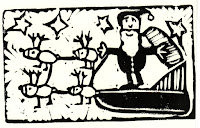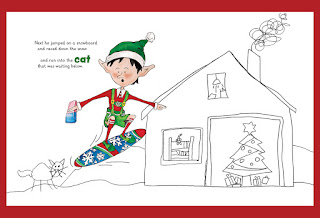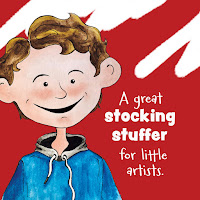As an author/illustrator of children’s books, I like to be
aware of what is going on in the publishing world from as many angles as
possible. This is why I am on over 100 forums including those for teachers,
librarians, principals, editors, illustrators, authors, and children’s book
self-publishers. In the last few years in the world of children’s book
self-publishing, there has been an increasing trend of people taking credit for
illustration work which they have not created. AI did not create this trend,
but it has added rocket fuel to the fire. AI has now become the number one
topic on many of the forums that I am on and for good reason. Let me explain.
The first big revolutionary change in the children’s book
industry was the introduction of print on demand books (POD). This is because
in traditional publishing, a book took months to make. Publishers had to make
sure that everything was perfect and professional before they could send a book
to press. POD books, on the other hand, could be printed immediately. POD
technology made it possible for anyone to publish a book who had the means to
do so. Companies like Amazon took advantage of this and made it possible for
people to publish their books for free. The market for self-published books
began to boom.
In order to find low priced images, many people began to go
online to pay for someone overseas where wages are lower to illustrate their
book. There are many illustrators on sites like Fiverr which will do an entire
picture book for less than $500. Unfortunately, these sites are filled with
scams. One of the biggest problems is artists stealing other illustrator’s work
and calling it their own to make their profiles look great. Another is
illustrators who take money and never send illustrations. Finally, you have
illustrators who make entire books using clip art. You would think that this
would be easy to spot, but it is rampant in the industry and is a huge problem
for various reasons.
It used to be easy to spot cheap self-published books
because so many used clip art. Within the course of less than a year, however,
this has completely flipped. Now AI in children’s books is all the rage. Unlike
clip art, AI images are on a completely different level. Many of the images
coming out of AI are absolutely amazing. It’s no wonder that tons of people are
using AI as an opportunity to make their dream book a reality. Nevertheless,
using AI in a children’s book has a lot of negative side effects and many of
these are why my colleagues and I are angry.
First of
all, there is currently no copyright on AI as a computer generates the images. That
means that if you publish a book full of AI images, there is not much stopping
someone from copying or sharing your images. This area is just too new and
there isn’t much legal precedence.
Secondly,
AI runs its algorithms based off actual artwork. Imagine taking a bunch of famous paintings
and collaging them together and saying it is your work. It is actually not,
especially because you didn’t even do the collaging yourself. Plus, the artists
are not being compensated or acknowledged for their work. In addition many
authors inadvertently place only their name on the cover of their AI
illustrated children’s book so that everyone assumes that they are the
illustrator. Unfortunately, I see this every day on the forums that I am on.
There is always a newbie author pushing their debut book with AI images, only
their name on the cover, and no admission that they used AI to create it. I’ll
be honest, people buying cheap illustrations frustrate me but people trying to
skip paying someone entirely and take the credit for it frustrate me even more.
Nevertheless, AI makes it easy to take credit for amazing illustrations
that you didn’t actually create.
Finally, many illustrators are losing work. The amount of AI
produced work is overwhelming the industry. Literary agents are flooded with AI
produced books. Publishers have stopped submissions because they do not know
how to handle the amount that they have received. This means that authors and
illustrators who have been spending months creating high quality books are
unable to get their books in the hands of the people who need to see them. When
authors and illustrators say that they are worried about their jobs this has
more to do with just AI making neat pictures. Just like photography killed the
editorial artist, AI will put a lot of illustrators out of business. The
technology is just too revolutionary. AI is able to generate illustrations
which rival even the best traditional artists at almost no cost.
So why does AI make illustrators so upset? In the end, I
think most of us are not angry at AI. We know that AI has a lot of uses and is
here to stay. We are frustrated, however, with people who misuse it for their
own gain. We are annoyed at people taking credit for artwork that they didn’t
create and those who use cheap illustrations instead of paying an expert to do
the job. We are irritated that the artists whose work is being used by AI are
not contacted, acknowledged, or compensated. We are angry at how recklessly AI
is being used in our industry and how that recklessness is damaging our
livelihood. We are upset because we know that a lot of us may not be working in
illustration ten years from now. The industry as we know it is gone. AI is here
and our world as illustrators will never be the same.
































